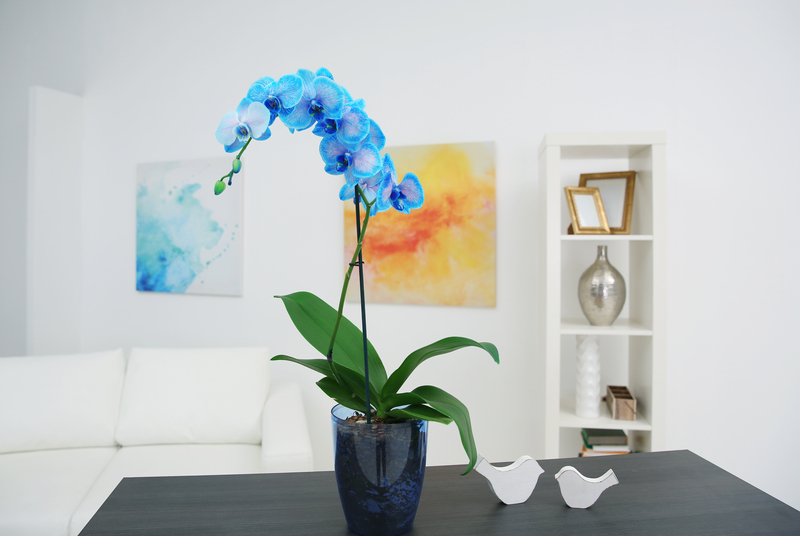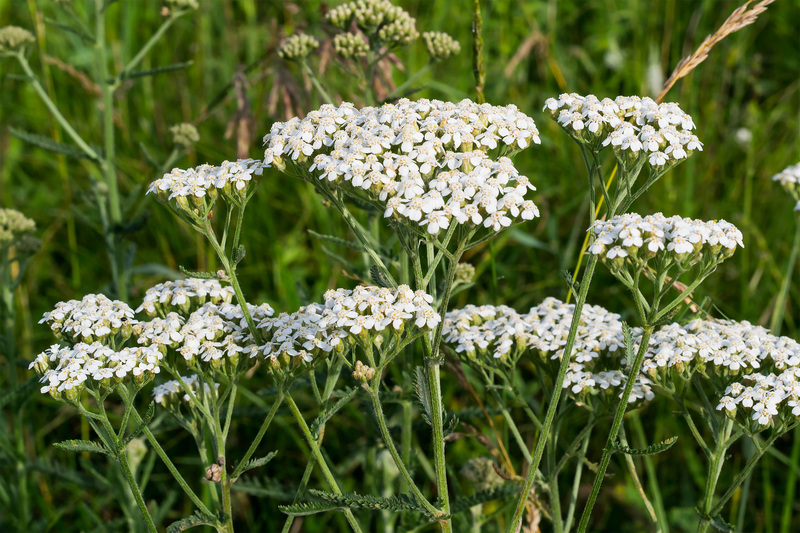Design Concepts to Engage Kids with Your Garden
Posted on 23/06/2025
Design Concepts to Engage Kids with Your Garden
Do you want to inspire children to explore, learn, and play in your outdoor space? Creating a garden that appeals to kids' natural curiosity isn't just educational--it's also one of the most enjoyable ways to spend time together as a family. By implementing creative garden design ideas for families, you'll encourage kids to interact with nature and foster a lifelong love for plants, wildlife, and healthy living.
In this comprehensive guide, we'll explore a variety of garden design concepts to engage kids, making your backyard a vibrant hub of activity, adventure, and learning.
Why Engage Kids with Your Garden?
- Promotes physical activity: Gardening gets kids moving! Digging, planting, and harvesting provide exercise in the fresh air.
- Sparks curiosity and creativity: The garden is a living laboratory, encouraging kids to observe, ask questions, and experiment.
- Teaches responsibility: Caring for plants nurtures a sense of responsibility and empathy for living things.
- Connects children with nature: Kids develop a lifelong appreciation for the environment and sustainability principles.
- Improves nutrition: Homegrown fruits and veggies prompt healthy eating habits.
So how can you design a child-friendly garden? Let's dive into creative approaches, structural elements, and playful features that capture kids' imaginations and ensure hours of joyful, meaningful outdoor experiences.

1. Plan for Playful Pathways and Secret Spaces
Garden Trails and Mini Mazes
Introducing winding paths or fun stepping stones is a surefire way to make your garden engaging for kids. Children love to wander, explore, and discover, so consider these elements:
- Curvy walkways lined with interesting textures or brightly colored mulch.
- Stepping stones made from recycled materials or painted by kids themselves.
- A mini hedge maze or living tunnel using willow or tall sunflowers adds a sense of adventure.
Tip: Let your kids help design or decorate the pathway. This encourages a sense of ownership and pride in their garden space.
Secret Hideaways and Storybook Corners
Imagine a quiet nook where children can retreat, read, or daydream. Try incorporating:
- Willow teepees: Simple frameworks covered with willow branches or vines for a natural playhouse.
- Sunflower houses: Grow tall sunflowers in a circle, leaving an entrance for a magical summer hideaway.
- Cozy reading 'nests' with weatherproof cushions surrounded by sensory plants.
Such spaces encourage imaginative play in your family garden design and become cherished childhood memories.
2. Sensory and Interactive Planting Zones
Themed Planting Beds
Design planting beds around intriguing themes to engage children with gardening:
- Pizza garden--Plant tomatoes, basil, oregano, and peppers in a circular bed divided into 'slices'.
- Rainbow vegetable patch--Grow colorful carrots, radishes, chard, and beetroot for an edible spectrum.
- Pollinator garden--Use nectar-rich flowers like lavender and nasturtium to invite bees and butterflies.
Inviting kids to choose a garden theme or specific plants for their own tiny plots boosts their sense of involvement and excitement about growing food or flowers.
Sensory Experiences
Appeal to all five senses with a sensory garden design for kids:
- Touch: Lamb's ear, ornamental grasses, and mint for petting and brushing hands against.
- Scent: Lavender, rosemary, and lemon balm for wonderful aromas.
- Sight: Contrasting foliage, vibrant flowers, and shimmering grasses.
- Sound: Rustling bamboo, seed pods that rattle, and water features.
- Taste: Strawberries, cherry tomatoes, and sugar snap peas for snacking.
Encourage kids to observe, touch, and smell each plant, fostering an intimate, joyful connection with your child-friendly garden.
3. Edible Gardens: Growing Snack Stations
Kid-Sized Vegetable Plots
Offer children their very own mini garden beds or container gardens. Raised beds or colorful planters at child height make gardening accessible and fun. Ideal vegetables for small hands include:
- Cherry tomatoes
- Radishes
- Mini carrots
- Lettuce
- Snap peas
- Strawberries
Let them plant, water, and harvest their own crops! Their pride in growing and eating garden-fresh snacks is unbeatable.
Herb Spirals and Scented Gardens
Herb spirals create a beautiful, interactive centerpiece for a family-friendly garden:
- Grow herbs like basil, chives, thyme, and parsley in a corkscrew or spiral pattern.
- Encourage taste tests and let kids garnish meals with their own herbs.
- Use natural rocks and recycled bricks for eco-friendly appeal.
Plants with interesting smells, like chocolate mint or pineapple sage, will delight children's senses and inspire a love of growing.
4. Wild Zones and Wildlife Features
Invite Beneficial Visitors
Make your garden wildlife-friendly by providing food, shelter, and water for insects and small animals:
- Bee and bug hotels: Encourage solitary bees, ladybugs, and lacewings.
- Bird feeders and baths: Bring feathered friends for kids to observe.
- Piles of sticks or rocks: Offer safe spots for hedgehogs, toads, and insects.
Observing creatures in your garden design for children helps kids develop empathy for wildlife and understand ecosystems.
Pond and Water Play Areas
Water brings wonder and discovery! Even a small container pond attracts frogs, dragonflies, and newts. Alternatively, add:
- Mini streams or rills made from child-safe materials.
- Shallow water trays or pebble pools for sensory play.
- Watering cans so children can care for their own patch.
Always make sure water features are safe and supervised--young children should never be left unattended.
5. Art, Music, and Creative Corners
Mud Kitchens and Outdoor Laboratories
Engage creativity with nature-inspired play spaces. A mud kitchen lets kids stir, scoop, and "cook" with leaves, mud, and petals. You can also offer:
- Large baskets of natural loose parts--acorns, rocks, pinecones--for open-ended play.
- Mason jars for collecting specimens--bugs, seeds, flowers--for study or art projects.
Garden Art Projects & Musical Spaces
Decorate your child-focused garden design with homemade art:
- Painted rocks, mosaic stepping stones, or DIY plant markers.
- Wind chimes, musical pipes, or percussion instruments made from upcycled materials.
Let your garden echo with laughter, color, and the sound of music and creativity!
6. Flexible Spaces for All Ages
Spaces to Gather, Rest, and Share
Make sure your family garden design has comfortable spots to sit, relax, and enjoy the outdoors together.
- Picnic areas with child-friendly tables and benches.
- Decks or platforms for reading, drawing, or storytelling outside.
- Hammocks or hanging swings nestled among the trees.
Adapting Your Garden as Kids Grow
A successful kids engagement garden evolves over time. As children grow, some spaces can change function:
- Sandpits become raised veggie beds.
- Mini playhouses turn into quiet study corners.
- Art zones transform into more challenging project spaces for teens.
This dynamic flexibility ensures your garden remains a vibrant family hub for learning and fun throughout childhood and beyond.
7. Pro Tips for Garden Safety and Success with Kids
- Use non-toxic plants: Avoid foxglove, lily of the valley, and other toxic species.
- Choose robust, forgiving plants--sunflowers, nasturtiums, marigolds, radishes, pumpkins.
- Keep chemical-free: Opt for organic pest control and avoid synthetic fertilizers.
- Tool safety: Offer age-appropriate, ergonomically designed tools just for kids.
- Shade and hydration: Provide shaded areas and encourage regular water breaks.
- Set clear garden boundaries, especially near water or delicate plants.

Conclusion: Making Memories in Your Child-Friendly Garden
Designing a garden that engages kids means balancing creativity, playfulness, education, and safety. From winding paths to edible patches, secret hideaways, and wildlife-friendly features, each design concept helps spark magical moments and meaningful discoveries.
Encourage your children to plant seeds, watch things grow, care for living creatures, and ask questions about the natural world. A well-designed family garden becomes a cherished classroom, playground, and sanctuary--fueling imagination, science, health, life skills, and love for the great outdoors.
Start small, let go of perfection, and watch your child's garden grow--alongside their curiosity and joy!
Quick Ideas to Kickstart Your Kids' Garden Adventure
- Let kids decorate plant pots with paint and stickers.
- Host bug-hunting races with magnifying glasses and notebooks.
- Start a seed journal to note changes and draw plants as they grow.
- Plan a garden picnic with homegrown herbs and veggies.
- Build a fairy or dinosaur "micro-garden" using toys, rocks, and ground cover plants.
Further Resources:
- Royal Horticultural Society: Gardening with Children
- KidsGardening.org
- National Geographic Kids: Gardening Facts
Let your garden be the magical backdrop where your kids' stories, skills, and confidence take root and blossom. Happy growing!

